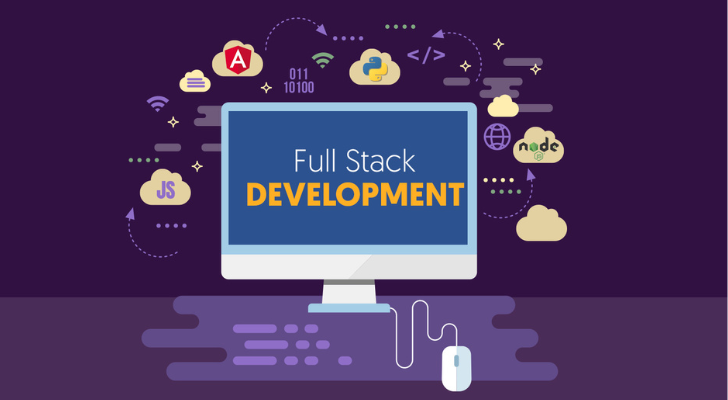Full Stack Development

In the realm of web development, Full Stack Development emerges as a comprehensive approach where developers master both frontend and backend technologies, allowing them to create end-to-end solutions. A Full Stack Developer possesses the versatility to work on the client side (frontend) as well as the server side (backend), making them instrumental in the complete lifecycle of web application development. Let's delve into the key aspects, skills, and advantages of Full Stack Development.
1. Frontend Development:
- Languages and Technologies: HTML, CSS, JavaScript.
- Responsibilities: Designing and implementing user interfaces, ensuring a seamless and engaging user experience.
- Frameworks: React, Angular, Vue.js.
2. Backend Development:
- Languages and Technologies: Node.js (JavaScript), Python, Ruby, Java, PHP.
- Responsibilities: Building server-side logic, managing databases, handling user authentication, and ensuring the overall functionality of the application.
- Frameworks: Express.js, Django (Python), Ruby on Rails, Spring (Java).
3. Database Management:
- Types: Relational (MySQL, PostgreSQL) and NoSQL (MongoDB, Cassandra).
- Responsibilities: Storing, retrieving, and managing data efficiently. Full Stack Developers are adept at working with various database systems.
4. Server and Hosting Environment:
- Servers: Apache, Nginx.
- Cloud Services: AWS, Azure, Google Cloud.
- Responsibilities: Deploying and managing applications, ensuring scalability and performance in various hosting environments.
5. Version Control/Git:
- Tools: Git, GitHub, GitLab.
- Responsibilities: Collaborative development, tracking changes, and managing code repositories.
6. Web Application Architecture:
- Patterns: Model-View-Controller (MVC), Model-View-ViewModel (MVVM).
- Responsibilities: Structuring applications for scalability, maintainability, and efficient code organization.
7. API (Application Programming Interface):
- Types: RESTful, GraphQL.
- Responsibilities: Developing and integrating APIs for communication between frontend and backend components.
8. Knowledge of Web Protocols:
- Protocols: HTTP/HTTPS, WebSockets.
- Responsibilities: Understanding and working with protocols for data exchange and communication.
9. Frontend and Backend Integration:
- Responsibilities: Seamlessly connecting frontend and backend components, ensuring data flow, and implementing application logic.
Skills Required for Full Stack Development:
-
Programming Languages:
- Proficiency in languages such as JavaScript, Python, Ruby, or Java.
-
Frontend Development:
- Mastery of HTML, CSS, and JavaScript.
- Experience with frontend frameworks like React, Angular, or Vue.js.
-
Backend Development:
- Expertise in server-side languages like Node.js, Python, Ruby, or Java.
- Knowledge of backend frameworks such as Express.js, Django, Ruby on Rails, or Spring.
-
Database Management:
- Ability to work with both relational and NoSQL databases.
-
Version Control:
- Understanding of Git for collaborative development.
-
Web Servers and Hosting:
- Familiarity with servers like Apache or Nginx.
- Experience with cloud services like AWS, Azure, or Google Cloud.
-
API Development:
- Proficient in building and integrating APIs using RESTful or GraphQL.
-
Web Application Architecture:
- Knowledge of architectural patterns like MVC or MVVM.
-
Problem-Solving and Troubleshooting:
- Ability to identify and solve issues at both frontend and backend levels.
Advantages of Full Stack Development:
-
Versatility and Flexibility:
- Full Stack Developers can work on various components of a project, providing flexibility in tasks and responsibilities.
-
End-to-End Development:
- They have a holistic understanding of the entire development process, from user interface design to server-side logic.
-
Cost-Effective Development:
- For smaller projects or startups, a Full Stack Developer can handle both frontend and backend tasks, reducing the need for multiple specialized roles.
-
Efficient Collaboration:
- Full Stack Developers can collaborate more effectively with both frontend and backend teams, fostering better communication and understanding.
-
Quick Problem Resolution:
- Having a comprehensive view of the application allows Full Stack Developers to troubleshoot and resolve issues efficiently.
-
Rapid Prototyping:
- They can create prototypes quickly, allowing for faster iterations and development cycles.
Challenges and Considerations:
-
Depth of Expertise:
- Full Stack Developers may not have the same depth of expertise as specialized frontend or backend developers.
-
Keeping Up with Technologies:
- Staying updated with advancements in both frontend and backend technologies can be challenging.
-
Project Scale:
- For large-scale projects, specialized roles may be necessary for in-depth expertise.


